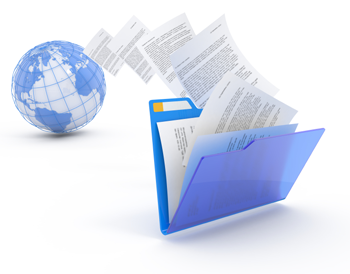
Earlier we blogged about the EDI utility billing process. But EDI’s not for everybody, and a number of utilities don’t offer it. The good news is that outside of the formal EDI protocols, many businesses operate quite successfully by sharing electronic billing data in more flexible formats and through less formal procedures.
Today let’s look briefly at these options. As we do, be alert to techniques that could be incorporated into your organization’s current or future business processes:
1. Web Scraping
Web scraping involves navigating to a vendor website and copying or downloading the needed data. Mozenda is a popular tool for this type of procedure. Mozenda enables a largely automated procedure for logging into a vendor web portal, navigating to the correct page/file, and downloading the available data. Often these tasks can be scheduled monthly or at whatever time intervals are desirable.
Web scraping typically does not involve any per-bill fees, and the tools are quite sophisticated and evolving at a rapid pace. Mint.com is an example of a popular free cloud-based web scraping tool that consumers can configure to maintain banking data for multiple accounts in a single interface.
2. PDF Downloads
PDF or Portable Document Format is a common file format for transmission of billing data, since it protects the integrity of the billing data. There are two types of PDFs. A native PDF file has raw data encoded within it. Conversion software can easily extract that data to word processing or spreadsheet documents for maintaining an energy database. A scanned PDF file is essentially a picture of your utility bill. The image file is more problematic, requiring interpretation/translation by Optical Character Recognition (OCR—see below) software, so it is not as useful as a native PDF.
3. CSV Downloads
CSV or Comma-Separated Value files are popular because of their compatibility with a large number of database and spreadsheet applications. They are essentially text files “punctuated” by commas, which delineate the data into discrete bundles. Each record consists of a line of text. The next line begins the next record. A database record for an individual’s contact information might look like this:
John,Doe,111 First Street,Wilmington,DE,19804,888-571-9090,john.doe@verizon.net
This information would correspond to the contact first name, last name, address, city, state, zip code, phone number and email address. For utility bill information, the database record might include account number, meter code, commodity, unit of measure, bill start date, bill end date, use, demand, and cost:
43406,211424,electric,kwh,10-02-2013,11-03-2013,40029,29,3202.32
4. OCR Downloads
Some vendors will create and distribute image data. This is a more complex process of data sharing. The paper bill must be scanned to create the image file. Then the image is interpreted by Optical Character Recognition (OCR) software, and the billing data is culled and saved, often in a proprietary file format developed by the OCR vendor.
Finally, the resulting data is converted to the file format required by the bill recipient. OCR conversion has some unique difficulties, one being that if the utility vendor changes the configuration of the billing document without informing the recipient, the OCR conversion process may break down and require time and effort to restore. In the meantime, data records may be compromised.
Regardless of the electronic bill transfer process or the file format(s) shared, each data field (billing date, cost, and use details, taxes, etc.) must be carefully mapped to ensure that the data is accurately and consistently recorded month after month. Good data leads to good reporting and productive energy analysis.
To learn more about receiving utility bills electronically, watch the video!
{{cta(‘cf744944-feb1-4ec5-b2df-d80698a90532’)}}
 Best-in-class portfolio-level energy and utility bill data management and reporting.
Best-in-class portfolio-level energy and utility bill data management and reporting.
 Real-time energy and sustainability analytics for high-performance, net-zero buildings.
Real-time energy and sustainability analytics for high-performance, net-zero buildings.
 A holistic view of financial-grade scope 1, 2, and 3 carbon emissions data across your entire business.
A holistic view of financial-grade scope 1, 2, and 3 carbon emissions data across your entire business.
 Energy and sustainability benchmarking compliance software designed for utilities.
Energy and sustainability benchmarking compliance software designed for utilities.



